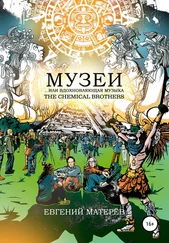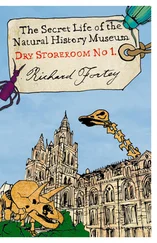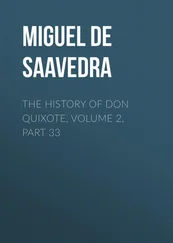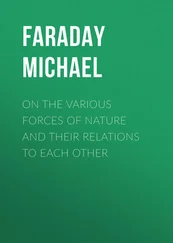Michael Faraday - The Chemical History of a Candle
Здесь есть возможность читать онлайн «Michael Faraday - The Chemical History of a Candle» — ознакомительный отрывок электронной книги совершенно бесплатно, а после прочтения отрывка купить полную версию. В некоторых случаях можно слушать аудио, скачать через торрент в формате fb2 и присутствует краткое содержание. Жанр: foreign_edu, Химия, на английском языке. Описание произведения, (предисловие) а так же отзывы посетителей доступны на портале библиотеки ЛибКат.
- Название:The Chemical History of a Candle
- Автор:
- Жанр:
- Год:неизвестен
- ISBN:нет данных
- Рейтинг книги:4 / 5. Голосов: 1
-
Избранное:Добавить в избранное
- Отзывы:
-
Ваша оценка:
- 80
- 1
- 2
- 3
- 4
- 5
The Chemical History of a Candle: краткое содержание, описание и аннотация
Предлагаем к чтению аннотацию, описание, краткое содержание или предисловие (зависит от того, что написал сам автор книги «The Chemical History of a Candle»). Если вы не нашли необходимую информацию о книге — напишите в комментариях, мы постараемся отыскать её.
The Chemical History of a Candle — читать онлайн ознакомительный отрывок
Ниже представлен текст книги, разбитый по страницам. Система сохранения места последней прочитанной страницы, позволяет с удобством читать онлайн бесплатно книгу «The Chemical History of a Candle», без необходимости каждый раз заново искать на чём Вы остановились. Поставьте закладку, и сможете в любой момент перейти на страницу, на которой закончили чтение.
Интервал:
Закладка:
Now, as to the shape or form of the flame. It concerns us much to know about the condition which the matter of the candle finally assumes at the top of the wick—where you have such beauty and brightness as nothing but combustion or flame can produce.
You have the glittering beauty of gold and silver, and the still higher lustre of jewels, like the ruby and diamond; but none of these rival the brilliancy and beauty of flame. What diamond can shine like flame? It owes its lustre at night-time to the very flame shining upon it. The flame shines in darkness, but the light which the diamond has is as nothing until the flame shine upon it, when it is brilliant again. The candle alone shines by itself, and for itself, or for those who have arranged the materials. Now, let us look a little at the form of the flame as you see it under the glass shade. It is steady and equal; and its general form is that which is represented in the diagram, varying with atmospheric disturbances, and also varying according to the size of the candle. It is a bright oblong—brighter at the top than towards the bottom—with the wick in the middle, and besides the wick in the middle, certain darker parts towards the bottom, where the ignition is not so perfect as in the part above.
I have a drawing here, sketched many years ago by Hooke, when he made his investigations. It is the drawing of the flame of a lamp, but it will apply to the flame of a candle. The cup of the candle is the vessel or lamp, the melted spermaceti is the oil, and the wick is common to both. Upon that he sets this little flame, and then he represents what is true—a certain quantity of matter rising about it which you do not see, and which, if you have not been here before, or are not familiar with the subject, you will not know of. He has here represented the parts of the surrounding atmosphere that are very essential to the flame, and that are always present with it. There is a current formed, which draws the flame out—for the flame which you see is really drawn out by the current, and drawn upward to a great height—just as Hooke has here shewn you by that prolongation of the current in the diagram. You may see this by taking a lighted candle, and putting it in the sun so as to get its shadow thrown on a piece of paper. How remarkable it is that that thing which is light enough to produce shadows of other objects, can be made to throw its own shadow on a piece of white paper or card, so that you can actually see streaming round the flame something which is not part of the flame, but is ascending and drawing the flame upwards. Now, I am going to imitate the sunlight, by applying the voltaic battery to the electric lamp. You now see our sun, and its great luminosity; and by placing a candle between it and the screen, we get the shadow of the flame.
You observe the shadow of the candle and of the wick; then there is a darkish part, as represented in the diagram, and then a part which is more distinct. Curiously enough, however, what we see in the shadow as the darkest part of the flame is, in reality, the brightest part; and here you see streaming upwards the ascending current of hot air, as shewn by Hooke, which draws out the flame, supplies it with air, and cools the sides of the cup of melted fuel.
I can give you here a little further illustration, for the purpose of shewing you how flame goes up or down; according to the current. I have here a flame—it is not a candle flame—but you can, no doubt, by this time, generalise enough to be able to compare one thing with another. What I am about to do is to change the ascending current that takes the flame upwards into a descending current. This I can easily do by the little apparatus you see before me. The flame, as I have said, is not a candle flame, but it is produced by alcohol, so that it shall not smoke too much. I will also colour the flame with another substance 6 6 The alcohol had chloride of copper dissolved in it: this produces a beautiful green flame.
, so that you may trace its course; for with the spirit alone you could hardly see well enough to have the opportunity of tracing its direction. By lighting this spirit-of-wine, we have then a flame produced; and you observe that when held in the air, it naturally goes upwards.
You understand now easily enough why flames go up under ordinary circumstances—it is because of the draught of air by which the combustion is formed. But now, by blowing the flame down, you see I am enabled to make it go downwards into this little chimney—the direction of the current being changed. Before we have concluded this course of lectures, we shall shew you a lamp in which the flame goes up and the smoke goes down, or the flame goes down and the smoke goes up. You see, then, that we have the power in this way of varying the flame in different directions.
There are now some other points that I must bring before you. Many of the flames you see here vary very much in their shape by the currents of air blowing around them in different directions; but we can, if we like, make flames so that they will look like fixtures, and we can photograph them—indeed, we have to photograph them—so that they become fixed to us, if we wish to find out everything concerning them. That, however, is not the only thing I wish to mention. If I take a flame sufficiently large, it does not keep that homogeneous, that uniform condition of shape, but it breaks out with a power of life which is quite wonderful. I am about to use another kind of fuel, but one which is truly and fairly a representative of the wax or tallow of a candle. I have here a large ball of cotton, which will serve as a wick. And, now that I have immersed it in spirit and applied a light to it, in what way does it differ from an ordinary candle? Why, it differs very much in one respect, that we have a vivacity and power about it, a beauty and a life entirely different from the light presented by a candle. You see those fine tongues of flame rising up. You have the same general disposition of the mass of the flame from below upwards; but, in addition to that, you have this remarkable breaking out into tongues which you do not perceive in the case of a candle. Now, why is this? I must explain it to you, because when you understand that perfectly, you will be able to follow me better in what I have to say hereafter. I suppose some here will have made for themselves the experiment I am going to shew you. Am I right in supposing that anybody here has played at snapdragon? I do not know a more beautiful illustration of the philosophy of flame, as to a certain part of its history, than the game of snapdragon. First, here is the dish; and let me say, that when you play snapdragon properly, you ought to have the dish well-warmed; you ought also to have warm plums and warm brandy, which, however, I have not got. When you have put the spirit into the dish, you have the cup and the fuel; and are not the raisins acting like the wicks? I now throw the plums into the dish, and light the spirit, and you see those beautiful tongues of flame that I refer to. You have the air creeping in over the edge of the dish forming these tongues. Why? Because, through the force of the current and the irregularity of the action of the flame, it cannot flow in one uniform stream. The air flows in so irregularly that you have what would otherwise be a single image, broken up into a variety of forms, and each of these little tongues has an independent existence of its own. Indeed, I might say, you have here a multitude of independent candles. You must not imagine, because you see these tongues all at once, that the flame is of this particular shape. A flame of that shape is never so at any one time. Never is a body of flame, like that which you just saw rising from the ball, of the shape it appears to you. It consists of a multitude of different shapes, succeeding each other so fast that the eye is only able to take cognisance of them all at once. In former times, I purposely analysed a flame of that general character, and the diagram shews you the different parts of which it is composed. They do not occur all at once: it is only because we see these shapes in such rapid succession, that they seem to us to exist all at one time.
Читать дальшеИнтервал:
Закладка:
Похожие книги на «The Chemical History of a Candle»
Представляем Вашему вниманию похожие книги на «The Chemical History of a Candle» списком для выбора. Мы отобрали схожую по названию и смыслу литературу в надежде предоставить читателям больше вариантов отыскать новые, интересные, ещё непрочитанные произведения.
Обсуждение, отзывы о книге «The Chemical History of a Candle» и просто собственные мнения читателей. Оставьте ваши комментарии, напишите, что Вы думаете о произведении, его смысле или главных героях. Укажите что конкретно понравилось, а что нет, и почему Вы так считаете.
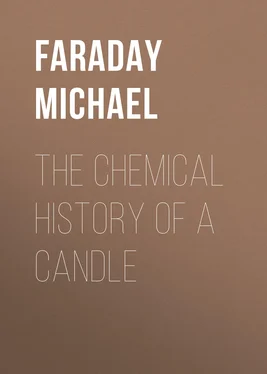




![Евгений Матерёв - Музеи… или вдохновляющая музыка The Chemical Brothers [litres самиздат]](/books/437288/evgenij-materev-muzei-ili-vdohnovlyayuchaya-muzyka-th-thumb.webp)
